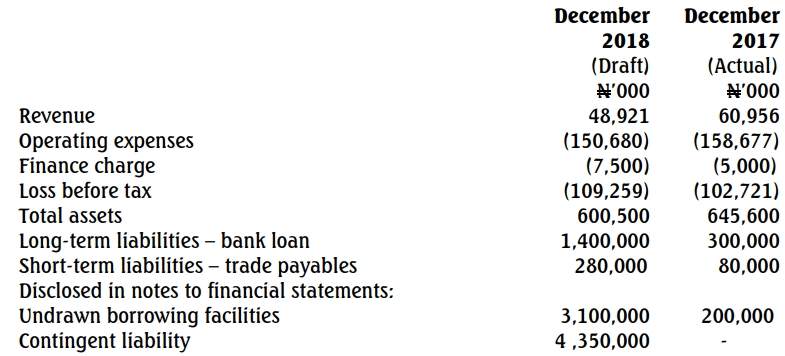- 20 Marks
AA – Mar 2025 – L2 – Q4 – Letter of Representation
Explain letter of representation, its contents, and actions if management refuses to provide it.
Question
a) During the audit of Abako Manufacturing LTD, the audit team from Henne Frema & Associates is awaiting written representations from management. One of the key areas of concern is the completeness of the financial records provided due to high turnover of staff especially at the finance department.
Required:
i) Explain letter of representation. (2 marks)
ii) Identify EIGHT statements/issues that may form part of a letter of representation. (4 marks)
iii) Discuss TWO actions that the auditor would take if management refuse to provide the letter of representation.
b) You are part of the team auditing a client who is part of a large multinational group. During the audit, your team noted that the company is reporting adverse liquidity and solvency ratios. Also, the company was in breach of its loan covenants and recently lost a major customer.
Your team has requested that management provide forecast of financial results showing that the company will be liquid and solvent in the foreseeable future, at least 12 months from the date of reporting to support management use of the going concern assumption in the preparation of the financial statements. Your team has also requested a letter of financial support from the company’s parent company.
The team has assessed that a material uncertainty exists and the use of the going concern assumption is inappropriate in the absence of the requested mitigation information.
Required:
i) State the type of audit report to be issued should management fail to provide the requested mitigation information. (4 marks)
ii) Assess the impact of the evidence provided on the audit report. Assume a material uncertainty still exists even after providing the needed evidence but the use of the going concern is appropriate. (6 marks)
Find Related Questions by Tags, levels, etc.
- Tags: Audit opinion, Audit report, Financial Statements, Going Concern, Material Uncertainty
- Level: Level 2
- Topic: Audit Reports
- Series: MAR 2025


